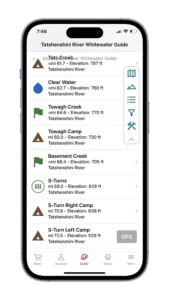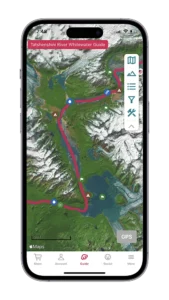About Walker Glacier
The name Walker Glacier comes from the pioneer raft guides who thought it an appropriate name for a glacier where you could simply step out of your boat and walk on the ice. Whether traveling down the Tatshenshini or Alsek, this was most people’s first opportunity to get up close and personal with the ice. Walking on a glacier is a unique opportunity to understand the nuances within these massive blue sheets of ice carving out the valleys. Feel the power of something ancient and hopefully take a sip of the cleanest water on the planet.
Walker Glacier and the access to the ice have unfortunately changed a great deal since that naming. Since the 1980s, Walker has receded over a mile into the valley where it descends. In the wake of the receding glacier, a pro glacial lake formed. For many years groups could float rafts into the lake and raft right up to the glacier. At really high water that is still possible, but lower lake levels and boulders near the exit of the lake are making it more challenging. The other option was to walk along an easy trail that followed the east side of the lake and eventually connected to the glacier. In 2016 the flat ice next to the trail thinned to such an extent that it collapsed into the lake. This process was decades in the making, but only became visible to guides a few years prior.
As it currently stands there is no easy way to access Walker Glacier. Rafting groups have been following that same eastern lake edge trail and pushing higher up onto the bedrock to get face to face with the ice. A team with mountaineering experience and gear could extend the hike on the glacier, but commercial trips are opting to end the hike on the bedrock for what is still a remarkable view of the glacier. In theory it is possible to access the glacier walking around the west side of the lake. This would require groups to camp downstream of the lake and outwash. Guides we have spoken with recently say this is a pretty heinous bushwack and has not been worth the effort.
Describing the changes at Walker Glacier often elicits disappointment in people who were yearning for the same experience decades of groups have had. Walker Glacier remains one of the highlights of the lower Alsek River, even in its current state. Bring boots to manage the mud, binoculars to looks for wildlife, and maybe even a bucket to collect small icebergs for drinks that evening. Explore the area, marvel at the ice, soak up the views, and while also keeping in mind the unfortunate reality that the glaciers in this magnificent wilderness are rapidly disappearing.








